|
Last updated November 16th. 2015
|
Pocket Watch Tools
November 16th. 2015
|
|
|
|
|
Pocket watches are in some respects specific and are different from
wrist watches, thus some tools used on pocket watches are specific only to
them, and are not used on other time pieces. Apart from the size, pocket
watches differ in winding, using different winding system.
Of course, as pocket watches evolved through centuries from their
earliest form the required tools changed as well. Hence, if one works on
watches belonging to various periods of time, the list of tools increases
to cover the need.
If one is doing restoration work, then these tools are indispensable,
and as time passes on they are getting more and more difficult to
procure. Material houses have stopped supplying them many decades ago,
hence one can get most of these tools from either an antique shop or
from sale of a deceased watchmaker's estate.
|
|
|
|
|
|
|
|
Early pocket watches were wound by use of a key, the time was also set by key.
One key was not enough for all the functions. One size was used to wind
the mainspring, another for setting the
time and in some cases the third one was used to regulate the rate,
if the watch was slow or fast running.
Keys were produced in many different forms, image to the right shows
modern keys, low cost style, usually supplied when the original key(s) are
lost, or are used during the PW repairs by a watchmaker.
|
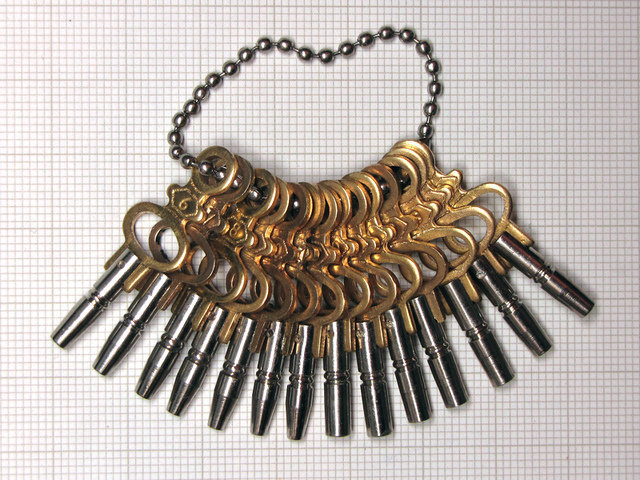
|
|
|
|
|
Over the years one either acquires or makes a set of PW bench
keys.
Mine were made over time, not all at once, but per need.
These are indispensable for letting down mainspring or for winding it
in order to test the way the movement works during the repair.
|
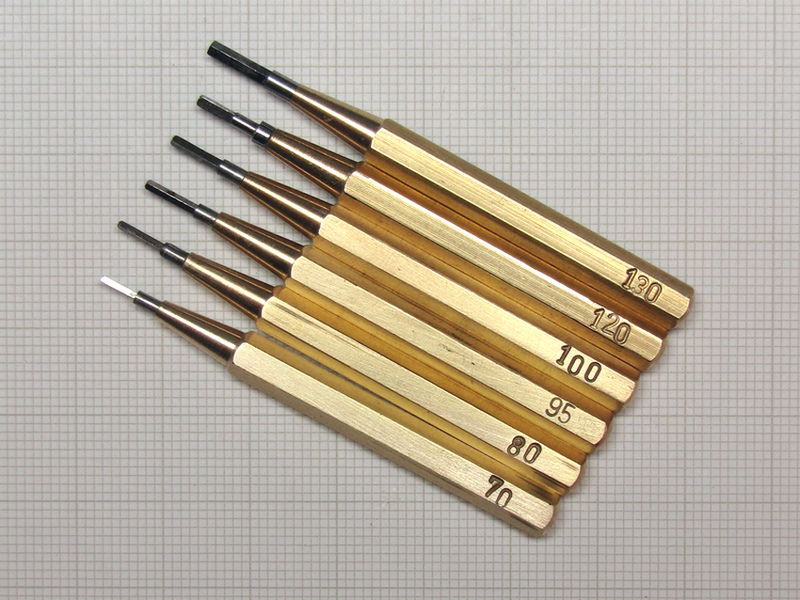
|
|
|
|
|
Pocket watches are worn in a vest pocket and for safety
reasons they are chain tied to bow and to the vest.
Sometime, due to the wear we need to replace the bow. New bow
must have its ends prepared to allow secure mounting onto the pendant, thus a need for a small tool known as a
'Bow Mill'.
As is shown, bow is placed in the Bow Mill for milling one of its ends.
When finished, process is repeated on the other end. Prepared bow is
then ready for mounting on pendant, free to swing, but securely
attached.
|
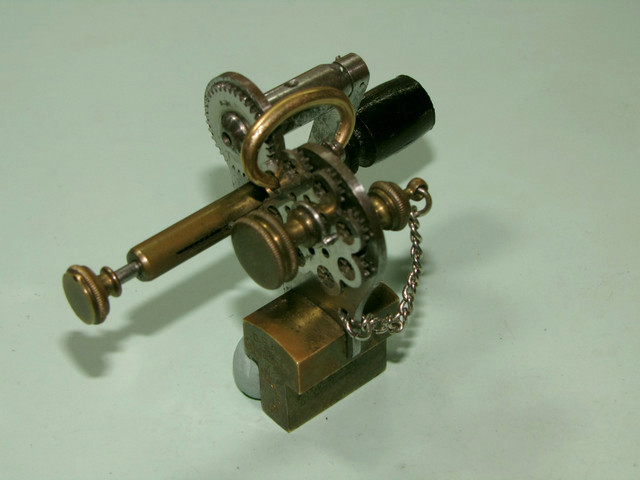
|
|
|
|
|
The next step usually is preparation of the pendant by forming the two
holes so that the bow ends would match the hole shape in the
pendant.
Thus, a set of seven pendant mills, providing choice of sizes as is
needed to ream the holes in
pendant to exactly match form of the attaching ends of the bow.
|
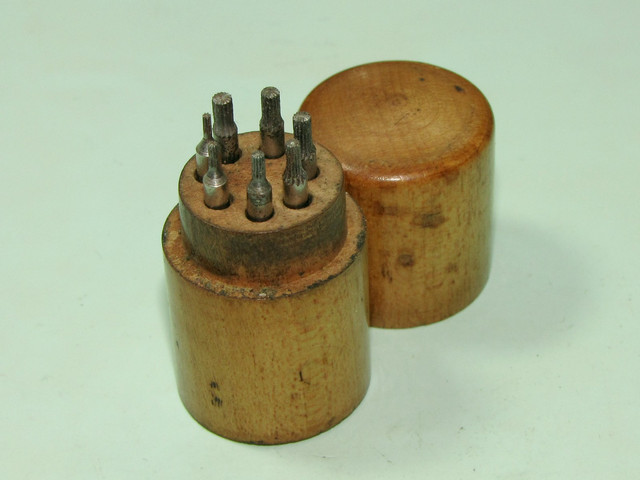
|
|
|
|
|
The pendant mills were used with the same Bow Mill mounted in the hole
in the crank handle, secured with a tiny cross bar within the handle so that it
would not slip while reaming the holes in the pendant. |
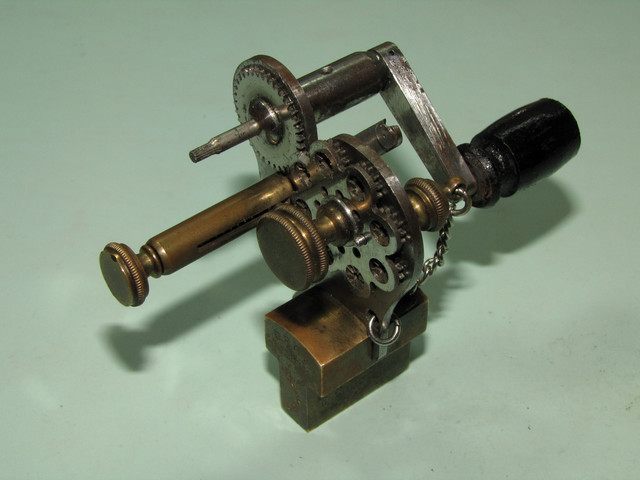
|
| |
|
| A close up image
of one of the pendant mills showing both ends, the working end and the
mounting end, latter used to secure it inside of the crank handle. |
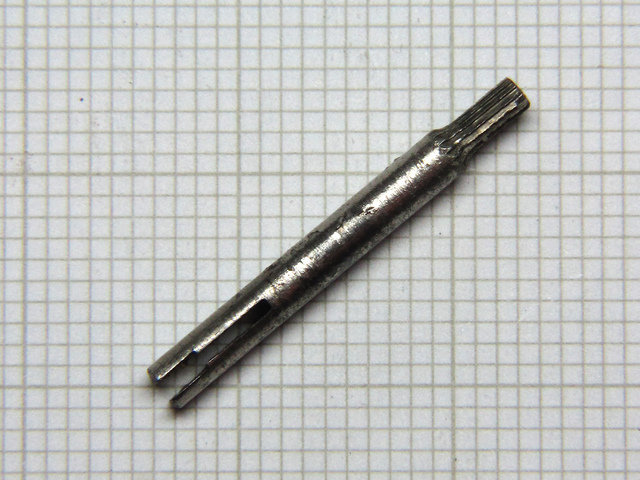 |
| |
|
| Another
PW speciality tool, the Bow Pliers.
Used to open and close the bow,
when replacing or when repairing the pendant.
|
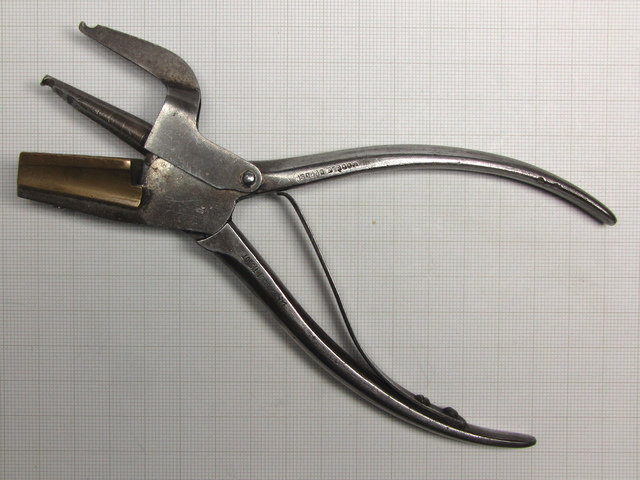
|
|
|
| A
close up of the Bow Pliers jaws.
The permanently mounted brass insert is used to prevent marring of
the bow when closing it to fit onto the pendant.
The inside of the brass insert is corrugated and tapered to accept
bows of different sizes.
The grooves milled across serve to prevent bow from slipping
when forming and closing it. |
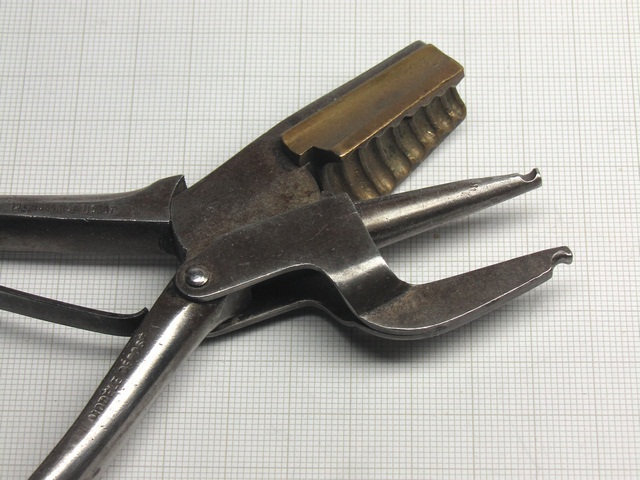
|
| |
|
| The
mainspring inner coil forming pliers.
Used to form the inner coil loop of the mainspring so that it will properly
fit the mainspring arbour without slipping.
The jaws of the pliers are formed to be parallel to allow
mainspring to stay in a single plane, without being deformed during
forming of the inner loop. |
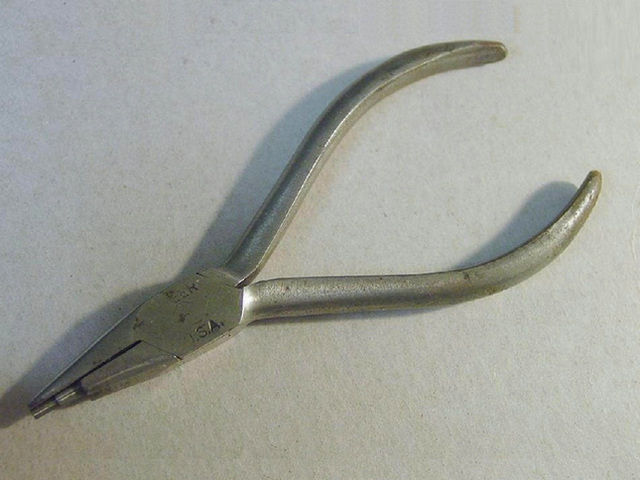
|
| |
|
| Mainspring
barrel arbours are designed for mainspring to be hooked onto them.
To prepare the end of the mainspring we use special mainspring
punching pliers equipped with several sized punches and a die to fit.
The same pliers are used to prepare a hook on the barrel wall, by
partially punching it to form the hook.
The image shows 'Favorite' brand of the universal mainspring
punching pliers. |
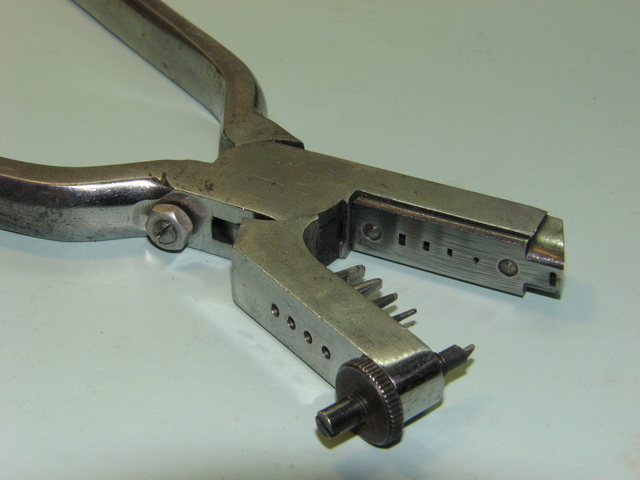
|
| |
|
| When
the case is of the snap on type, over time it may loose its snap
closing ability due to wear.
The watchmaker is then required to either send the case to the case
maker's for repair or if the wear is slight he can do the repair
himself. |
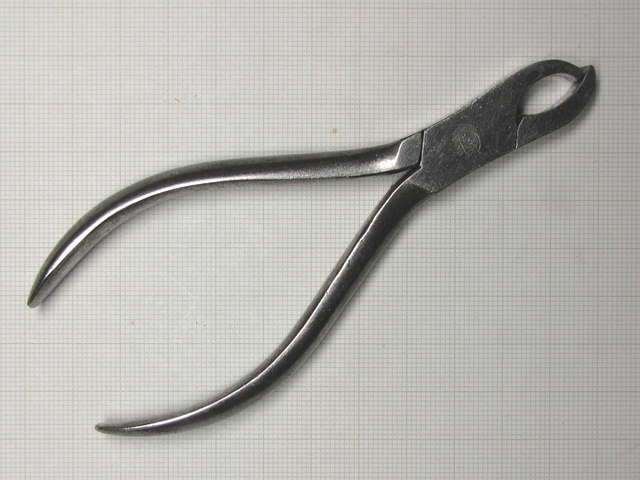 |
| |
|
| Image
from an old tools catalogue shows the intended purpose and way of use
of the pocket watch cap shaping pliers.
In order not to mar the case back, I use a small piece of leather
which I fold over the case cap, and only then I apply the pliers to
the cap. |
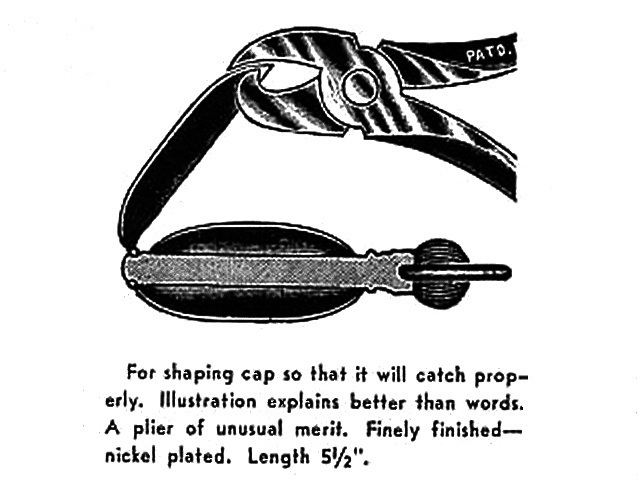 |
| |
|
| As the
design of pocket watches advanced to the keyless winding and time
setting there was a need for mounting crowns, forming the inner parts
of the crown as well as securing the crown and stem within the
pendant.
Tool to the right is a K&D sleeve wrench, a typical example of
many different wrenches.
|
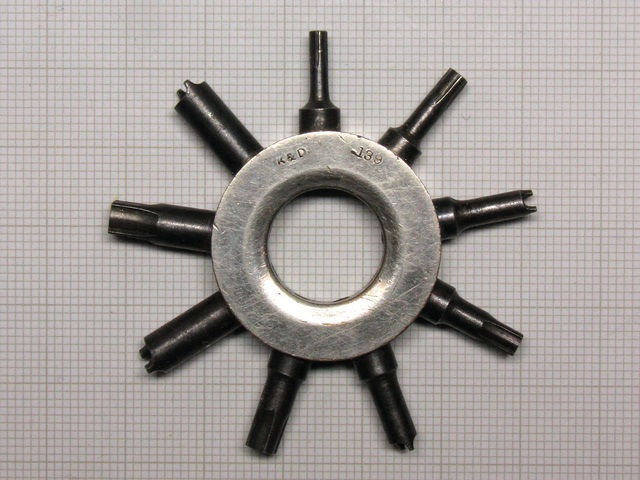 |
| |
|
| Here
we have typical PW Crown Reamers used to ream the inside of the crown
to fit the pendant of the PW. |
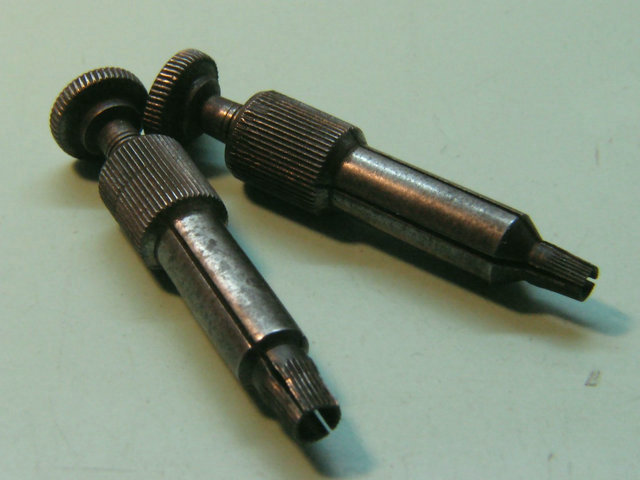 |
|
|
| A set
of PW Crown Collets.
Normally used to hold a PW Crown when there was a need to do some
work in the watchmaker's lathe.
This set requires the use of collet #50 (5.0 mm) to hold the winding
crown in the lathe headstock, without damaging the crown.
|
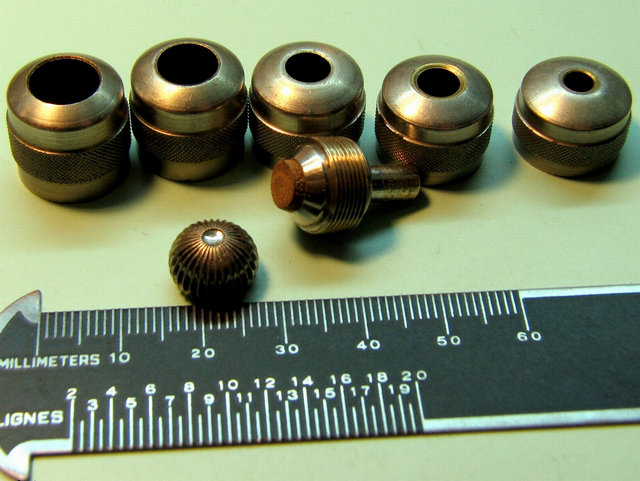 |
|
|
| Another
rare piece, the Dial Foot Repairing Tool.
Used to accurately position dial to exactly place dial feet so that
they precisely correspond to the movement so that the feet can be
soldered onto the back side of the dial. |
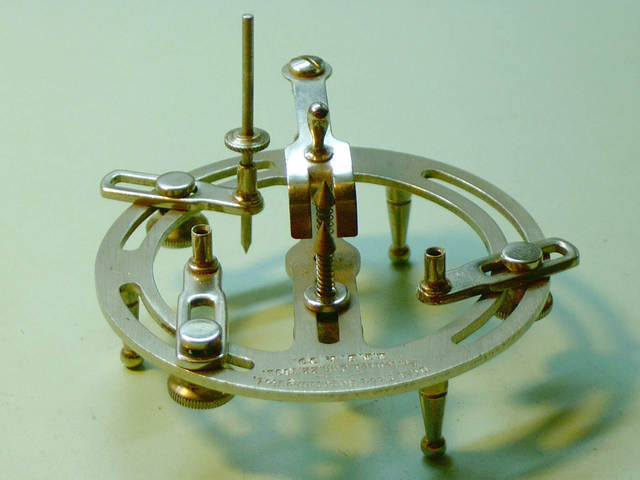 |
|
|
| After
positions of the dial feet are transferred off the movement to the
tool, dial is
placed in the tool, dial feet positions are then transferred onto the dial
back side using the steel pointer.
When finished, dial feet can be soldered, dial will be centred and
will fit the movement perfectly, and be affixed to it. |
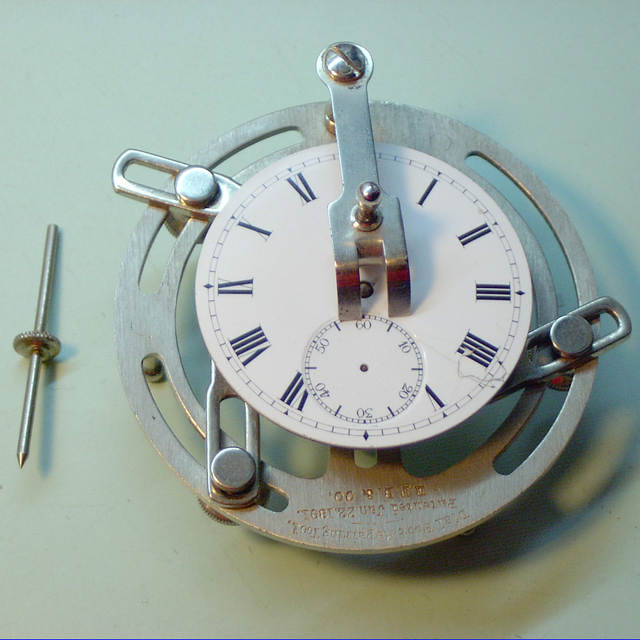 |
|
|
| American
made pocket watches had their case parts, bezel and back cover, typically
screwed- on rather than snap-on as most of European.
To enable opening a PW case there was need for a special tool, a
Vacuum Case Opener.
Some were made entirely of rubber, some had a wooden holder to
allow the increase of friction. |
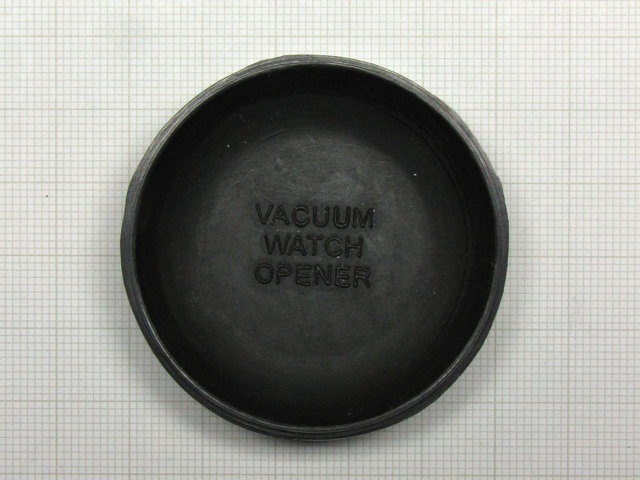 |
| |
|
| |
|
| |
|
|
Of
course there are more of the specialised PW tools about which I shall add
more information as the bench time will permit me. |
| |
|
|
|
|
|